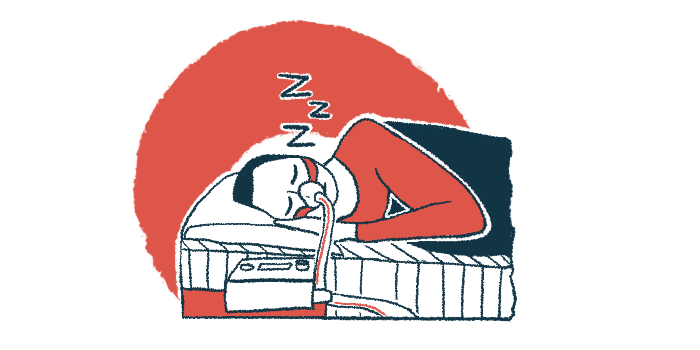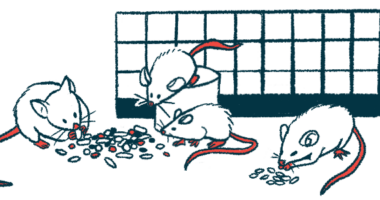Spinraza stabilized lung function, sleep in children with SMA types 2, 3
Study surveyed children for two years before and two years after treatment

Treatment with Spinraza (nusinersen) for two years led to improvements in apnea and oxygen saturation during sleep in children with spinal muscular atrophy (SMA), a real-world study in Australia reported.
The treatment also contributed to ceasing ventilation support in some patients with less severe disease, and stabilized lung function. However, researchers could not “provide specific criteria on when to initiate or cease [noninvasive ventilation] in the context of SMA treated with nusinersen,” they wrote.
The study, “Respiratory and sleep outcomes in children with SMA treated with nusinersen- real world experience,” was published in the journal Neuromuscular Disorders.
Spinraza is an RNA-based molecule designed to increase levels of the survival motor neuron (SMN) protein, which is lacking in people with SMA due to mutations in the SMN1 gene.
Clinical data has shown the medication can significantly improve motor function and survival in children with SMA types 1, 2, and 3. However, it remains unclear “how improvements in peripheral motor function … translate into clinically significant respiratory/sleep outcomes,” the scientists wrote.
48 children with SMA took part in Australian study
To better understand the impact of Spinraza on respiratory function and sleep, researchers in Australia examined data from all children with SMA types 1, 2, and 3, who initiated Spinraza treatment between May 2015 and April 2019 and were followed at the Sydney Children’s Hospital Randwick and the Children’s Hospital Westmead.
A total of 48 children, who initiated treatment at a mean age of 6.98 years, were included in the study. Of them, 10 had SMA type 1, 23 had SMA type 2, and 15 had type 3.
The researchers examined data collected between the two years leading up to Spinraza initiation and the two years after starting treatment.
Polysomnography studies — which record brain waves, blood oxygen, and carbon dioxide levels, as well as heart rate and breathing during sleep, to detect sleep disorders — were available for 22 patients before Spinraza and 32 patients after the treatment.
Results showed a significant improvement in the lowest blood oxygen levels reached by patients during sleep after treatment initiation (87.9% to 92.3%). In other words, oxygen levels didn’t drop as much during sleep when children were receiving treatment with Spinraza.
This was likely related to the significant reduction in apnea events — from 13.96 events per hour before treatment to 2.9 events after treatment. Apnea is a sleep disorder where breathing stops and starts during sleep, which is known to lower oxygen levels.
Before the beginning of the treatment, 21 patients (44%) required noninvasive ventilation at night. In the two years after starting Spinraza, six patients (five with SMA type 2 and one with SMA type 3) stopped receiving ventilatory support based on clinician recommendation. On the other hand, three children started on nocturnal ventilation after starting Spinraza, two with type 1 SMA and one with type 2 disease.
Spirometry testing, which is designed to measure lung function, was available for 22 children before treatment and 26 after. Only children with type 2 or 3 SMA were examined, as type 1 patients were too young to perform the tests.
No significant improvements were observed in forced vital capacity, the maximum amount of air a patient can forcibly exhale from the lungs after fully inhaling. However, patients also did not experience significant declines, suggesting a stabilization of respiratory function.
Moreover, the treatment did not significantly improve the number of unplanned respiratory hospital admissions, nor the length of intensive care unit stay in children with SMA types 2 or 3. For children with SMA type 1, there were significantly more respiratory admissions in the two years after starting the treatment.
Based on the findings, the researchers recommend considering ventilation cessation in patients who improved clinical or sleep records outcomes, which may significantly reduce the burden of care of these children.
Yet, there remains a “pressing need to develop international, evidence-based consensus guidelines for initiating and ceasing [noninvasive ventilation] in SMA,” they wrote.
“Follow up studies over the next 5 years would considerably add to our understanding of disease process in treated SMA, where clinical heterogeneity will continue to increase with newer treatments becoming more widely available,” the researchers wrote.







